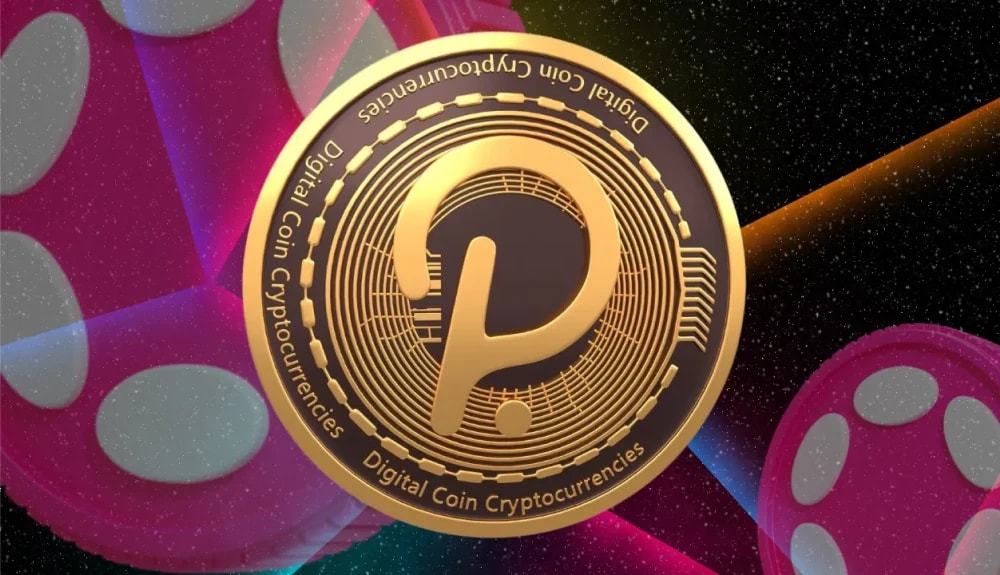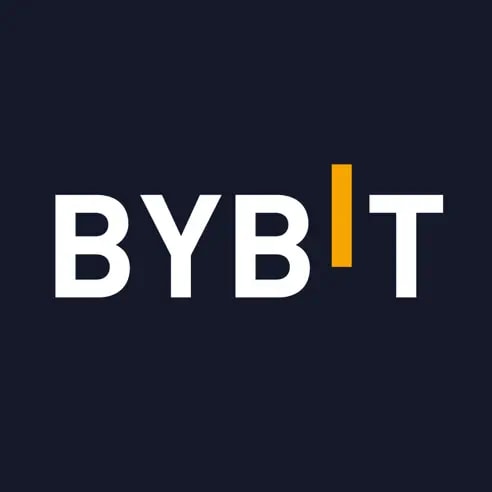Blockchain technology keeps evolving, and in the ever-changing crypto world, there's a buzz around Polkadot 2.0. If you're like us, a blockchain enthusiast eager to stay up-to-date, a developer with an insatiable passion for innovation, or an investor on the lookout for the next big opportunity, you've come to the right place. Today, we're diving into the future of Polkadot and exploring how this groundbreaking upgrade will reshape the cryptocurrency landscape.

Understanding Polkadot: An Ecosystem of Blockchains
Polkadot is not just another blockchain; it's an entire ecosystem of interconnected blockchains, with the Polkadot blockchain, known as the relay chain, at its core. This revolutionary network was created by Gavin Wood, one of the co-founders of Ethereum, with the ambitious goal of solving the scalability and interoperability issues faced by many blockchain networks. Picture it as a network of interconnected blockchains, working collaboratively and seamlessly.
One of the key features that makes Polkadot so unique is the concept of parachains. These sub-chains within the Polkadot ecosystem operate independently but can interact with each other and with other layer-one networks, such as Ethereum and Solana, through custom-built bridges. The newfound interoperability paves the way for limitless opportunities for developers and projects, fostering a culture of innovation and collaboration across various platforms.
With the introduction of Polkadot 2.0, the vision of a robust multi-chain network takes a significant stride forward, amplifying the capabilities and potential of the Polkadot ecosystem. Polkadot 2.0 builds upon the solid foundation laid by its predecessor, offering a range of key advancements that are set to revolutionize the world of decentralized networks.

What is Polkadot 2.0?
Polkadot 2.0 represents an upgrade to the existing Polkadot network, introducing numerous new features and improvements. One significant change in Polkadot 2.0 is the transition from the lease-based model for parachains to a more flexible pay-as-you-go system. This upgrade also introduces parachain slot auctions, enabling projects to secure a slot on the relay chain and connect their own parachains. This change reduces entry barriers for smaller projects, making Polkadot more accessible and appealing to a wider range of developers and businesses.
How does Polkadot work?
Polkadot operates by connecting different blockchains together, facilitating communication and interaction among them. It achieves this through the Relay Chain, which serves as the main chain responsible for network security and consensus. The Relay Chain connects to various parachains, which function as independent mini-blockchains. Each parachain has the freedom to run its own applications and establish its own rules.
To ensure the security and efficiency of transaction processing, Polkadot utilizes the Grandpa finality gadget. This mechanism plays a vital role in confirming and adding transactions to the blockchain, guaranteeing a robust and reliable process.
An essential feature of Polkadot is its ability to enable cross-chain communication. This means that different blockchains within the Polkadot network can seamlessly interact and share information. This opens up new avenues for developers to create innovative applications that can collaborate seamlessly.
Polkadot is also designed to handle a large number of transactions simultaneously, ensuring scalability for the network to grow and accommodate more users.
What makes Polkadot Unique?
Polkadot offers a range of key benefits that distinguish it from other blockchain platforms:
- Interoperability: Polkadot enables different blockchains to communicate and share information, fostering cross-chain applications and collaborations.
- Scalability: Through its parallel processing architecture, Polkadot can handle multiple transactions concurrently, enhancing overall network scalability.
- Security: The relay chain provides a robust security layer for the entire network, making it resistant to attacks and ensuring system integrity.
- Governance: Polkadot features an innovative governance mechanism that allows token holders to participate in decision-making processes, shaping the network's future.
The Key Advancements in Polkadot 2.0
1. Parachains and Parathreads
One of the most thrilling features of Polkadot 2.0 is the advent of parachains and parathreads. These specialized chains have the ability to link up with the main Polkadot relay chain. Parachains are known for their permanence and robust security, while parathreads offer a more flexible option, allowing projects with limited budgets to participate in the Polkadot ecosystem. This development vastly expands the network's versatility, accommodating a wide range of use cases.
The introduction of parachains and parathreads ushers in a world of opportunities for developers and businesses alike. They now have the ability to construct and deploy their own dedicated chains within the Polkadot network. This ensures top-notch security, scalability, and seamless communication with other chains.
2. Nominated Proof-of-Stake (NPoS)
Polkadot 2.0 brings a significant upgrade to its consensus mechanism with Nominated Proof-of-Stake (NPoS). This innovative system allows DOT token holders to nominate validators, bolstering the security and governance of the network. NPoS ensures that the network remains decentralized and inclusive, as more stakeholders have a say in its operation.
By enabling token holders to actively participate in the consensus process, Polkadot 2.0 reinforces the trust and integrity of the network. It aligns perfectly with the principles of decentralization and empowers the community to directly influence the future of the network.
3. Cross-Chain Compatibility
Polkadot's interoperability capabilities are further enhanced in Polkadot 2.0. The network facilitates the seamless flow of assets and data between parachains and other blockchains. This means that Polkadot can interact harmoniously with networks such as Ethereum, Bitcoin, and more. This cross-chain compatibility opens up a world of new opportunities for the development of decentralized applications and services.
With cross-chain compatibility, developers can harness the strengths of different blockchains and create groundbreaking solutions that were previously unimaginable. Polkadot 2.0 acts as an essential bridge between various blockchain networks, enabling the secure and efficient transfer of assets and data.
4. On-Chain Governance
Polkadot 2.0 introduces significant improvements in on-chain governance, paving the way for more efficient decision-making processes. The community now has the ability to propose and vote on upgrades and changes directly on the blockchain. This transparent and decentralized approach to governance ensures that the network evolves in a manner that aligns with the consensus of the community.
On-chain governance enables faster decision-making and minimizes the risk of centralization. It establishes a system where every participant has a voice, fostering a truly decentralized and inclusive network. Polkadot 2.0 empowers the community to shape the future of the network, ensuring its dynamism and responsiveness to the evolving needs of its users.
Polkadot’s DOT Token
DOT, the native cryptocurrency of the Polkadot network, plays a vital role in governing and operating this innovative network. Holding DOT tokens empowers individuals to engage in various activities such as staking, governance voting, and bonding.
Staking DOT tokens is a crucial way to secure the network. By staking their tokens, DOT holders actively participate in the consensus mechanism, helping to validate transactions and maintain the integrity of the network. In return for their contribution, stakers have the opportunity to earn rewards, making it a compelling option for long-term investors.
As a DOT holder, you have the privilege of having a voice in the decision-making process of the network. Your voting power allows you to shape the direction of Polkadot, ensuring that the community's consensus is reflected in the network's development and evolution. Bonding DOT tokens is essential for projects aiming to secure a slot on the Relay Chain during slot auctions. By bonding their tokens, projects demonstrate their commitment to the network and its success.
The value of DOT has experienced remarkable growth since its initial coin offering (ICO). It has emerged as one of the top cryptocurrencies in terms of market capitalization. As of now, with a current price of $6.88 and a market cap of $8,773,609,442, Polkadot and its native token DOT have captured the attention of investors and enthusiasts alike. If you're looking for an investment opportunity in the dynamic cryptocurrency market, Polkadot and its native token DOT are certainly worth considering.

Polkadot is a groundbreaking blockchain platform that tackles the scalability and interoperability challenges faced by many existing networks. Its innovative architecture enables different blockchains to communicate and share information, opening up a new era of cross-chain applications. With the Polkadot 2.0 upgrade, the platform is set to enhance its capabilities even further, solidifying its position as a key player in the blockchain industry.

%20500%20x%20288%20(15).webp)
_%20500%20x%20288%20(15).webp)
_%20500%20x%20288%20(15).webp)
_%20500%20x%20288%20(15).webp)








